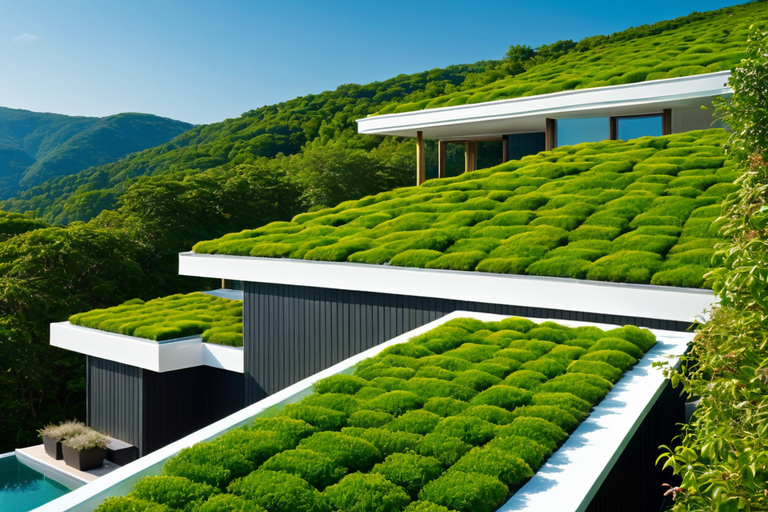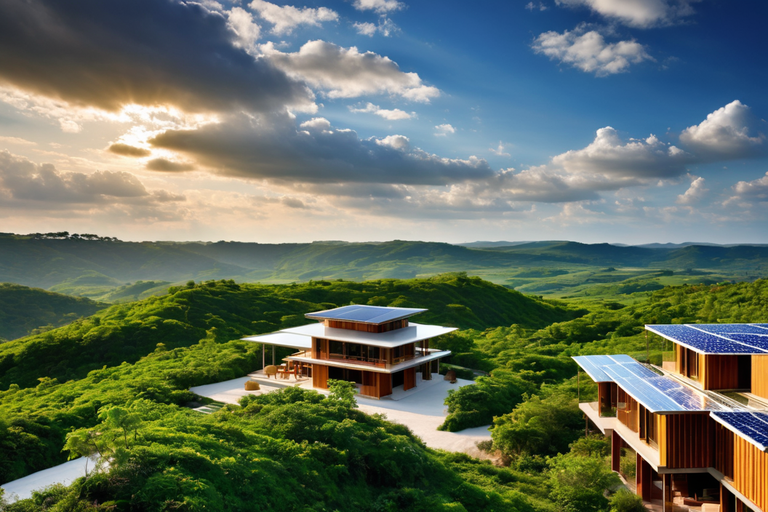Discover the secret to creating sustainable homes with eco-friendly building materials that pave the way for a greener future.
Have you ever wondered how much of an impact our choice of building materials has on the environment?
The answer may surprise you. It’s not just the operation of buildings, such as heating and cooling, that contributes to carbon emissions. The materials we use to construct our homes and offices play a significant role, too. Traditional building materials like concrete, steel, and brick have been the cornerstones of construction for centuries. They are sturdy, reliable, and familiar. However, producing these materials often involves processes that are harmful to our environment.
For instance, cement manufacturing, a key ingredient in concrete, is responsible for approximately 7% of global carbon dioxide emissions.
Steel production, too, is a significant carbon emitter, requiring high temperatures that are usually achieved by burning fossil fuels. As for bricks, they’re usually made from clay, and the extraction of clay leads to soil erosion and degradation.
Now imagine a world where buildings are not just structures that provide shelter but also contribute positively to the environment. It’s not science fiction but a reality gradually taking shape with the advent of eco-friendly building materials.
Bamboo, for instance, is a remarkable alternative to traditional materials. It’s robust, flexible, and fast-growing, which makes it a highly renewable resource. Moreover, it absorbs carbon dioxide as it grows, thereby reducing greenhouse gases in the atmosphere.
Then there’s hempcrete, a material made from the woody core of the hemp plant mixed with lime. It’s not only a fantastic insulator but also absorbs and stores carbon dioxide.
Recycled plastic is another eco-friendly material that’s gaining popularity. By using recycled plastic in construction, we’re reducing the demand for new plastic production and finding a productive use for the millions of tons of plastic waste that would otherwise end up in landfills or the ocean.
The benefits of these eco-friendly materials extend beyond their environmental impact. They can also be more cost-effective in the long run. Bamboo, hempcrete, and recycled plastic are often cheaper than their traditional counterparts when considering the full lifecycle costs, including maintenance and replacement.
Plus, their superior insulation properties can lead to energy savings. Eco-friendly materials are the future of construction. But this future can only be realised if we all play our part.
The next time you plan a construction project, consider choosing eco-friendly materials, whether it’s a small home renovation or a large commercial building. Not only will you be helping to reduce the environmental impact of construction, but you’ll also be contributing to a more sustainable and resilient future.
So take that first step today and join us at Bliss Planet. Think green. Build green. And together, we can ensure a healthier planet for generations to come!
Topics
- Recycled Steel
- Bamboo
- Recycled Glass
- Cork
- Hempcrete
- Straw Bales
- Rammed Earth
- Wool Insulation
- Cork Insulation
- Green Roofs
In today’s world, where environmental sustainability is more important than ever, the construction industry is stepping up to the plate by incorporating eco-friendly building materials into their projects. These innovative materials not only help reduce our carbon footprint but also contribute to creating healthier and more energy-efficient buildings. This blog post will explore ten sustainable and environmentally friendly building materials that pave the way for a greener future.
Read About – Shipping Containers: The Eco-Friendly Solution for Affordable and Sustainable Living in Eco-Villages
Recycled Steel
Recycled steel is a versatile, durable, eco-friendly, and cost-effective building material. Construction projects can significantly reduce their carbon footprint by using recycled steel instead of virgin steel. This material can be recycled indefinitely without losing its strength, making it a sustainable alternative for various applications.

Bamboo
Bamboo is a rapidly renewable resource that has gained popularity in the construction industry for its strength and versatility. This fast-growing plant can be harvested multiple times throughout its life cycle, making it a sustainable choice for flooring, furniture, and structural elements. Bamboo is eco-friendly and aesthetically pleasing, adding a touch of natural beauty to any building.
We are building a better future for ourselves and the planet by choosing eco-friendly building materials. Read more on how to make a positive impact: #sustainablebuilding #ecofriendly #betterfuture
Recycled Glass
Recycled glass is another eco-friendly building material making waves in the construction industry. Construction projects can help reduce the demand for raw materials and divert glass waste from landfills by repurposing glass waste into building materials such as countertops, tiles, and insulation. Recycled glass offers a unique and sustainable option for adding a touch of elegance to any building.
Cork
Cork is a renewable resource harvested from the bark of cork oak trees. This natural material is not only environmentally friendly but also offers a range of benefits for building construction. Cork is a fire-resistant natural insulator that can be used for flooring, walls, and ceilings. By incorporating cork into building projects, construction companies can create sustainable and durable structures that stand the test of time.
Hempcrete
Hempcrete is a sustainable building material made from hemp fibers, lime, and water. This eco-friendly alternative to traditional concrete offers excellent thermal properties, making it an ideal choice for insulation and structural elements. Hempcrete is lightweight, breathable, and energy-efficient, providing a sustainable solution for construction projects looking to reduce their environmental impact.
Straw Bales
Straw bales are a natural and biodegradable building material that has gained popularity in sustainable construction projects. These highly insulating bales are affordable, renewable, and offer excellent insulation properties for walls and roofs. Using straw bales in building construction, projects can reduce their carbon footprint and create energy-efficient structures promoting environmental sustainability.
Rammed Earth
Rammed earth is a traditional building technique that makes a comeback in sustainable construction projects. This method compresses soil into solid walls, creating durable and energy-efficient structures. Rammed earth buildings have a natural and earthy finish, adding a touch of rustic charm to any project. By incorporating rammed earth into construction, projects can create sustainable and aesthetically pleasing structures that stand the test of time.
Wool Insulation
Wool insulation is a natural and eco-friendly alternative to traditional insulation materials. Made from sheep’s wool, it is non-toxic, biodegradable, and offers excellent thermal properties. Wool insulation can be used for walls, floors, and roofs, providing a sustainable solution for construction projects looking to improve energy efficiency and promote environmental sustainability.
Cork Insulation
Cork insulation is another sustainable building material made from the bark of cork oak trees. This eco-friendly insulation material is fire-resistant, soundproof, and offers excellent thermal properties. By using cork insulation in building construction, projects can create energy-efficient structures that promote environmental sustainability and provide a healthy indoor environment for occupants.

Green Roofs
Green roofs are a sustainable building feature becoming increasingly popular in construction projects. These roofs consist of vegetation planted on a waterproof membrane, providing various benefits for both the building and the environment. Green roofs help reduce stormwater runoff, improve air quality, and provide natural insulation, making them a sustainable choice for construction projects looking to create healthier and more energy-efficient buildings.
The industry is moving towards a greener and more sustainable future by incorporating these ten sustainable and environmentally friendly building materials into construction projects. Not only do these materials help reduce our impact on the planet, but they also create buildings that are healthier, more energy-efficient, and aesthetically pleasing. As we prioritize environmental sustainability, these innovative materials will play a crucial role in building a better future for generations to come.






It’s time to make a change for the better. By choosing eco-friendly building materials, we are taking a huge step towards creating a more sustainable future. These materials not only help reduce our carbon footprint, but also benefit our health and well-being. By making the switch, we are protecting our planet for future generations to come. Let’s take action now and create a world where sustainability is at the forefront of all our decisions. Together, we can build a brighter, healthier tomorrow.